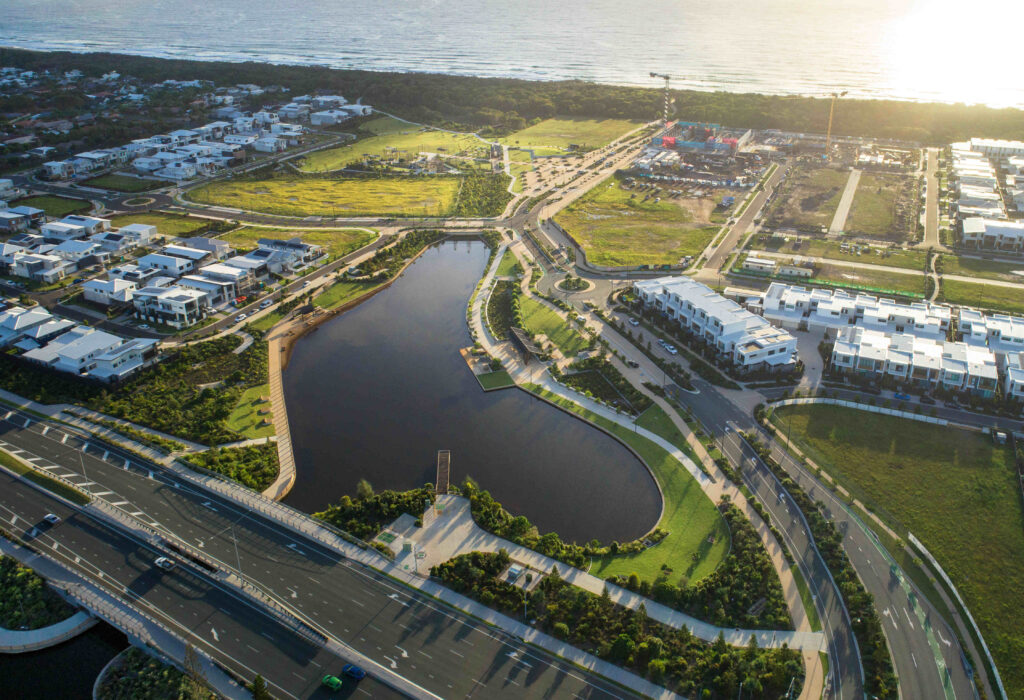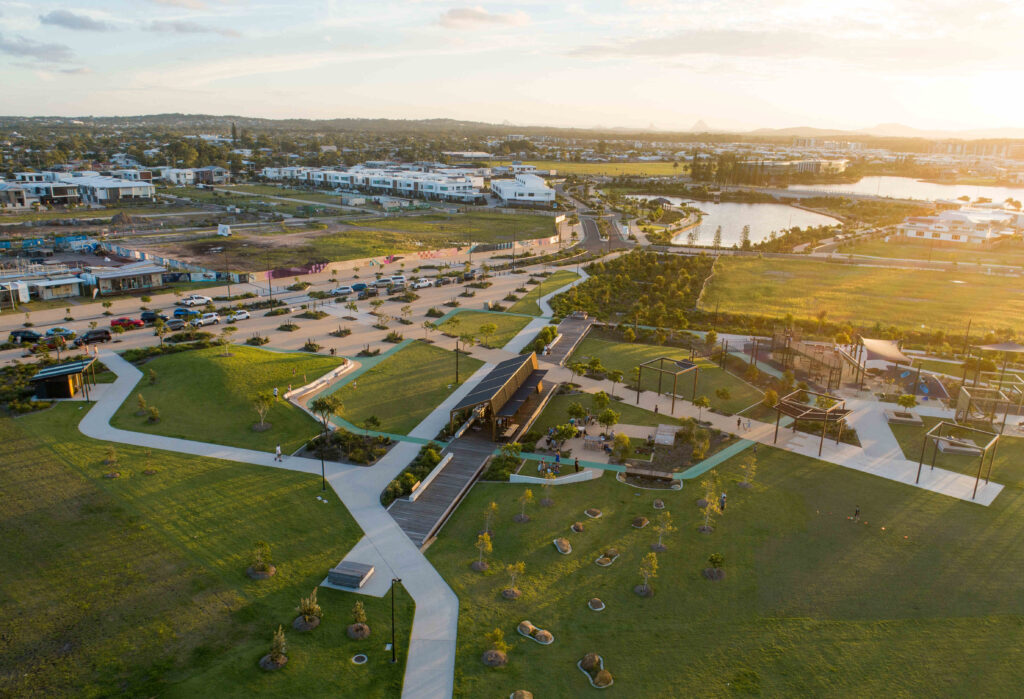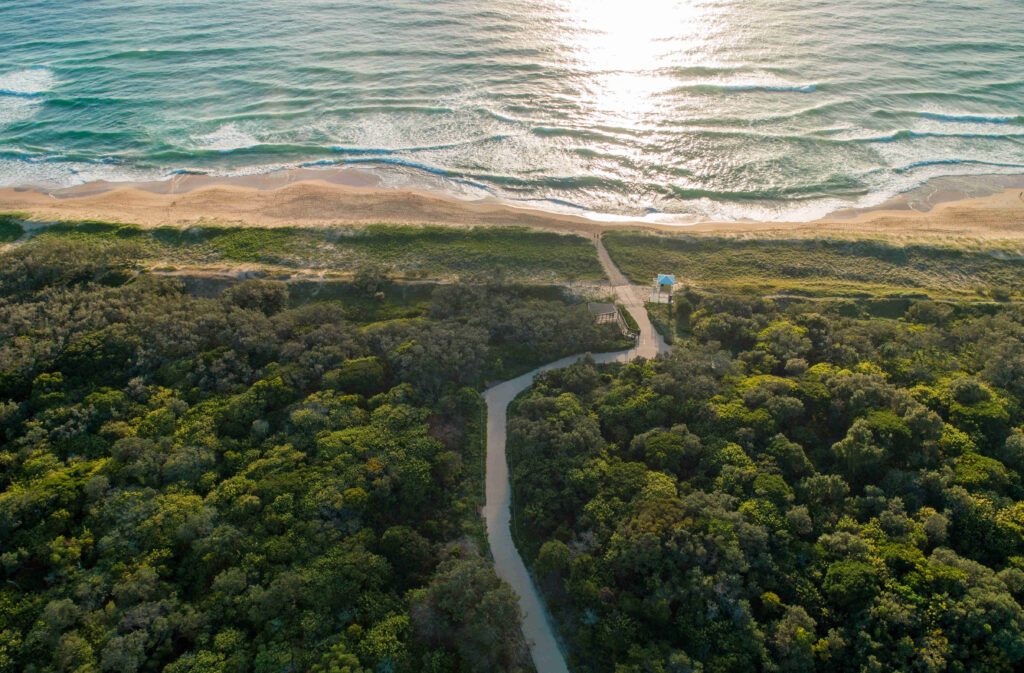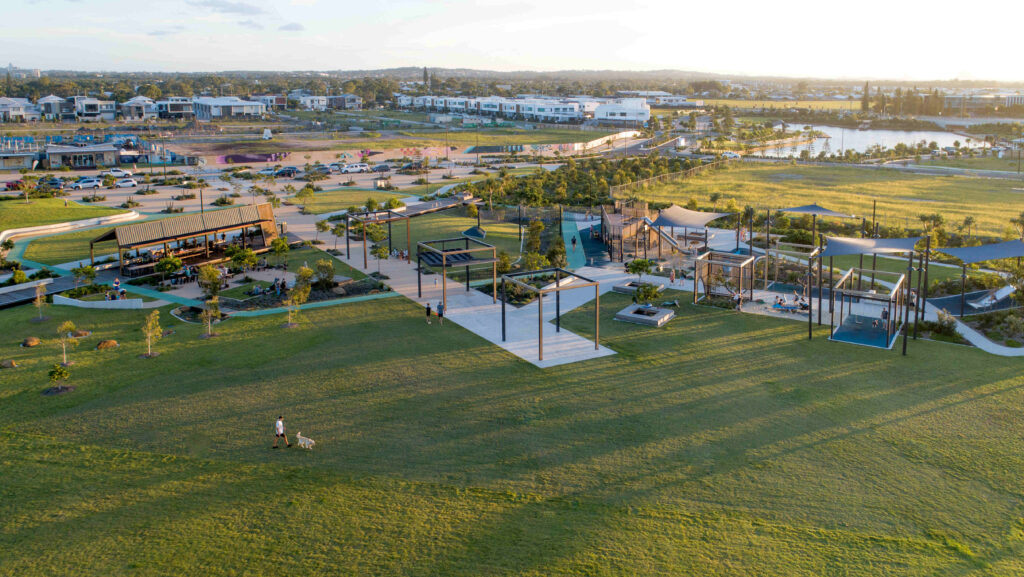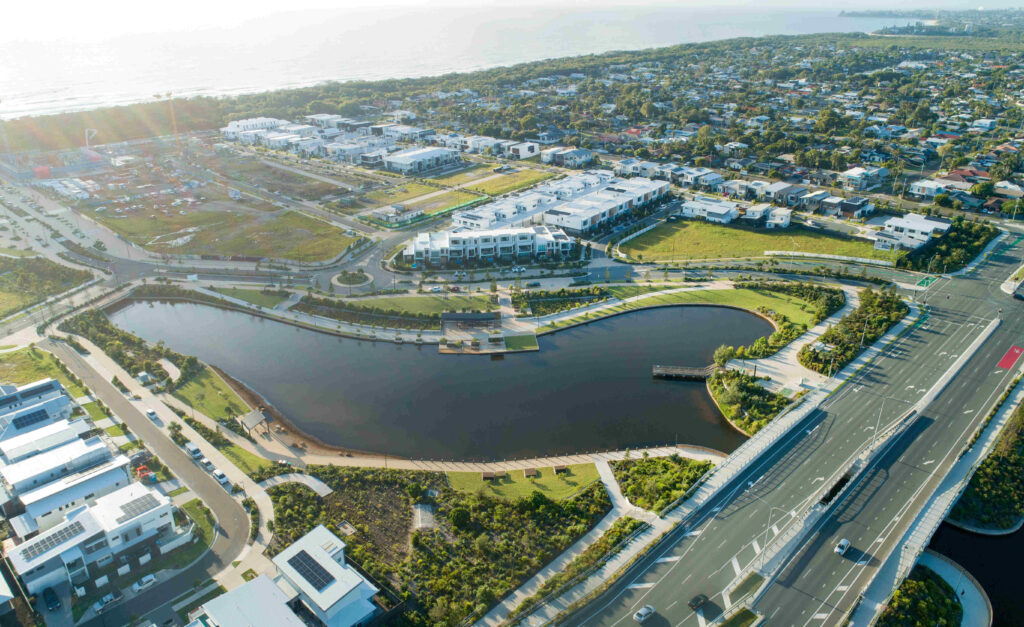Delivering nature-inspired spaces: Meet Shelley Martin
Over the last 17 years, Shelley Martin has worked on a wide range of projects from small-scale residential to large-scale parklands, community developments, facilities upgrades at national parks, and open space infrastructure projects. Shelley brings extensive experience as a project manager and landscape architect in both the public and private sectors. She has strong skills in design, graphic communication, documentation, authority liaison, budget management and construction administration. Design and delivery of residential communities and review across a range of projects is Shelley’s current focus.
What inspired you to join the industry and what has kept you passionate over the past 15 years?
I originally intended to study interior design. However, after starting a degree in Landscape Architecture, I felt more inspired by the idea of creating outdoor spaces that connect people to the natural environment. I have always loved being immersed in nature and it was thrilling to discover a career that allowed me to shape the built environment while integrating the natural one.
What has been your favorite project that you’ve worked on and why?
Between 2016 and 2022, we delivered Bokarina Beach, a 400-lot coastal village community in Queensland, for Stockland Residential, an Australian property development firm. The project was incredibly engaging, offering a diverse array of landscape design opportunities from multimillion-dollar parklands and a bespoke playscape to dune-crossing beach access, natural wetland reconstruction, boardwalks, and the extension of an existing lake.
What excites me most about this project is that we realised all the key design drivers developed with the client during the initial concept planning. Our vision was to create a community that could become the Sunshine Coasts ‘best kept secret’, a connected coastal village, inspired by and embedded in nature with water at the heart and an energetic and vibrant coastal village vibe. Throughout the design, budget planning, approval, and construction phases, we navigated various challenges to realising our vision. One notable example occurred when planning for the development’s stormwater. We worked with the client and engineers to realise the value of literally creating ‘water at the heart’ by transforming a stormwater detention basin into an opportunity to extend an existing manmade lake into the heart of the openspace precinct. The result is a scenic central lake for end of line stormwater management and a jewel in the openspace network with direct water access for the community. The result is a vibrant village hub with a relaxed coastal aesthetic, seamlessly embedded in nature with water at its heart
How do you approach a new project from a design perspective, especially when working with a diverse set of clients and project types?
My approach varies depending on the scale, location and specific needs of the client. Typically, I take cues from the natural environment — whether it’s existing or pre-clearing vegetation communities, proximity to natural or cultural features like water bodies, or endemic fauna. I am passionate about referencing the natural character of a place — its context or history — through structural forms, geometry, colour and material palettes, and plant species. Understanding how a place connects to its context is central to my design process. At Bokarina, a beachside location, we concentrated on coastal cues utilising endemic and local dunal plant species, curvilinear forms reminiscent of patterns left in the sand by the tide, and a hardscape palette dominated by soft neutral tones of shells and driftwood, and the natural warmth of timber. These elements drew the beach aesthetic into the development situating it seamlessly in its context.
What trends or advancements in landscape architecture design are you most excited about? How do you see these influencing future projects?
I’m fascinated by initiatives in countries like Denmark, such as ‘Wild on Purpose,’ which focus on fostering biodiversity and promoting pollination and habitat creation within urban environments. In Australia, we’re beginning to see similar strategies emerging, such as ‘Biodiversity in Place,’ though activation is slower here. For future projects, I would love to see a shift away from manicured monocultures, hybrids, and turf toward diverse, endemic plant palettes, especially in non-traditional applications like street verges. These areas make up more than a third of all greenspaces in our cities.
Increasing the net area of diverse, natural landscapes is essential to improving the resilience of our built environments. Of course, implementation comes with its own set of challenges — from local authority preferences to the commercial availability of plant species. However, as demand for sustainable solutions increases, best practices will drive industry change. There are many principles that can be applied at any scale to advance this goal. It’s not so much about recreating nature, it’s being inspired by it, implementing highly diverse understory planting with endemic species, adopting management practices to benefit wildlife such as reducing pesticides and mowing, and realising the value of small spaces such as verge gardens, green roofs, and vertical gardens in creating a network across urban environments that connects to wider ecological systems.
What advice would you give to the next generation of landscape architects looking to build a strong reputation and create lasting impacts through their work?
Follow ideas and principles that inspire you, surround yourself with creative people you can learn from and share your ideas with. Layer what you learn into your work and always remain open to creative debate.
